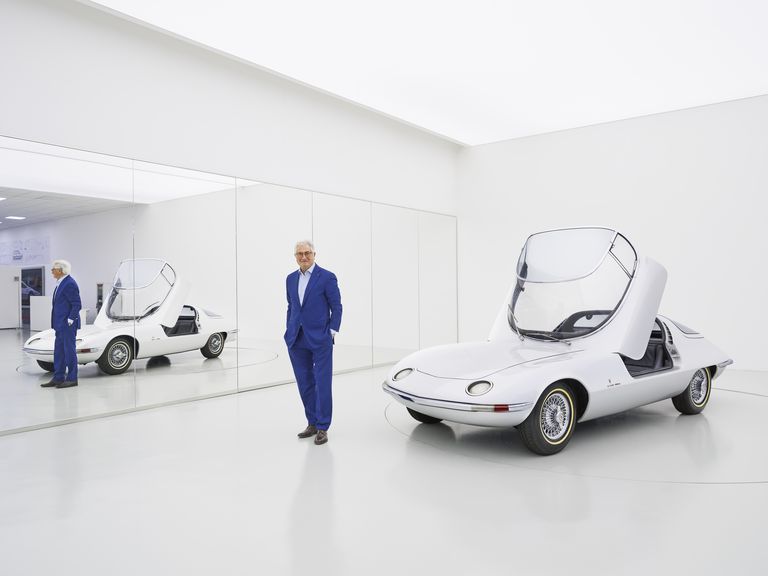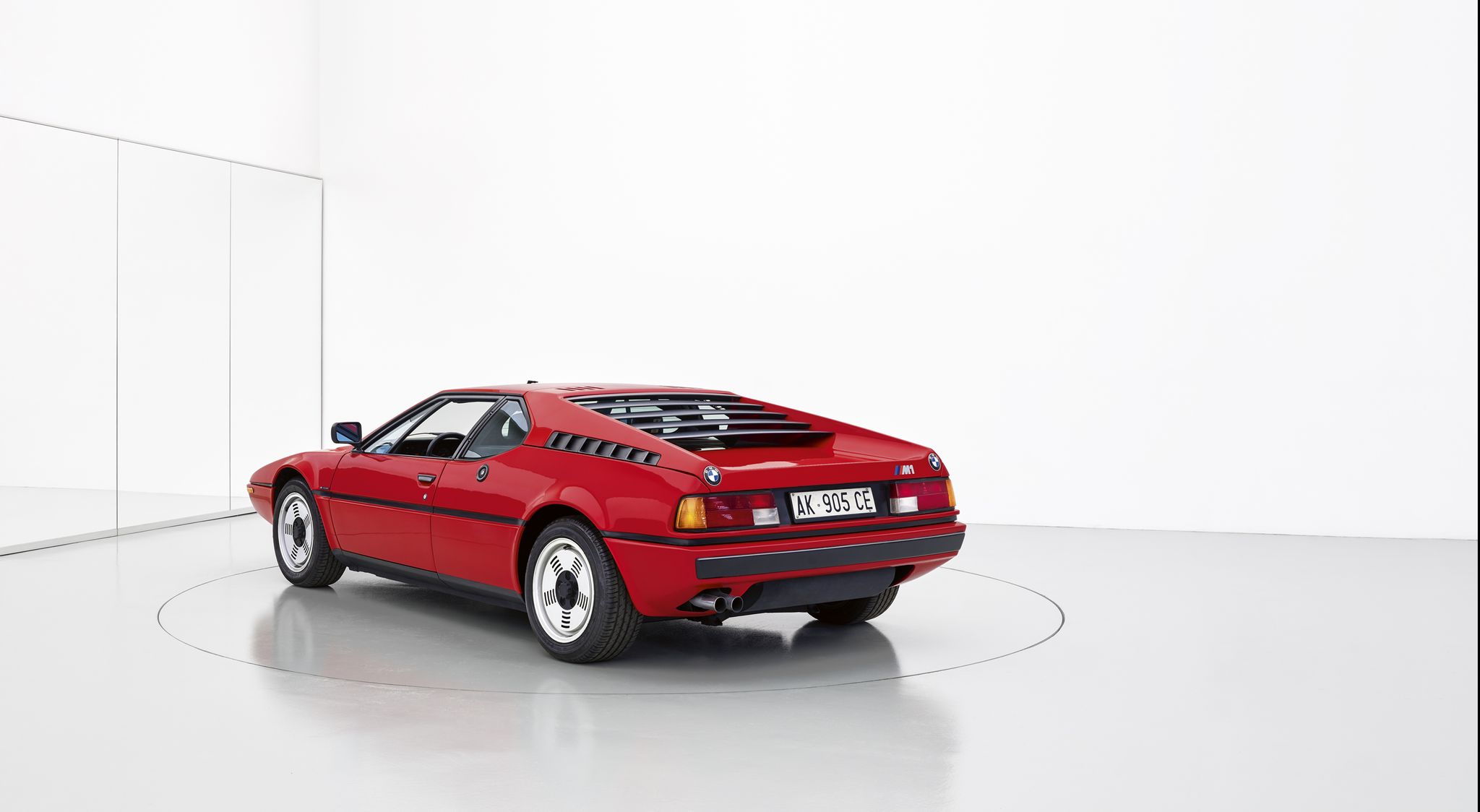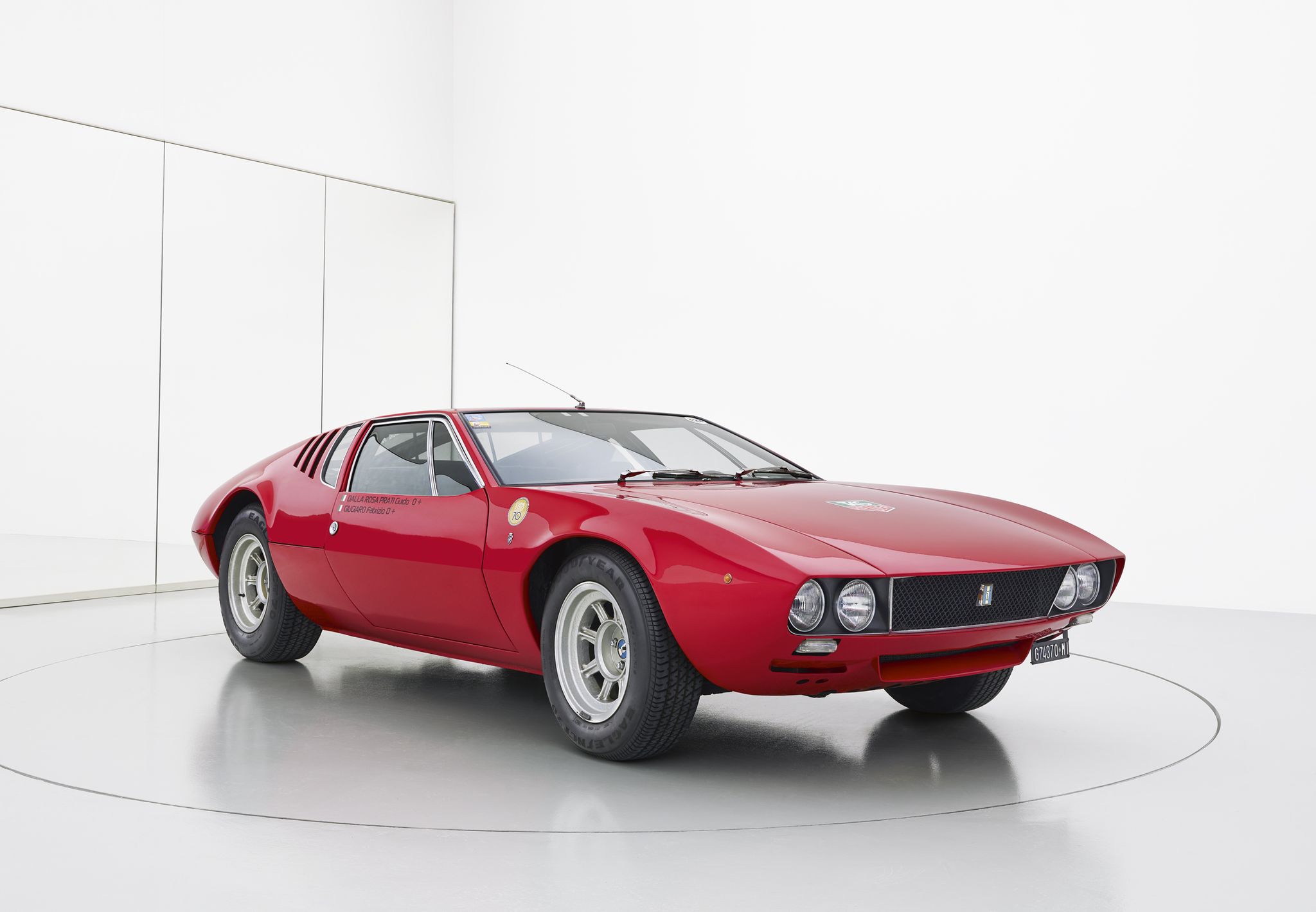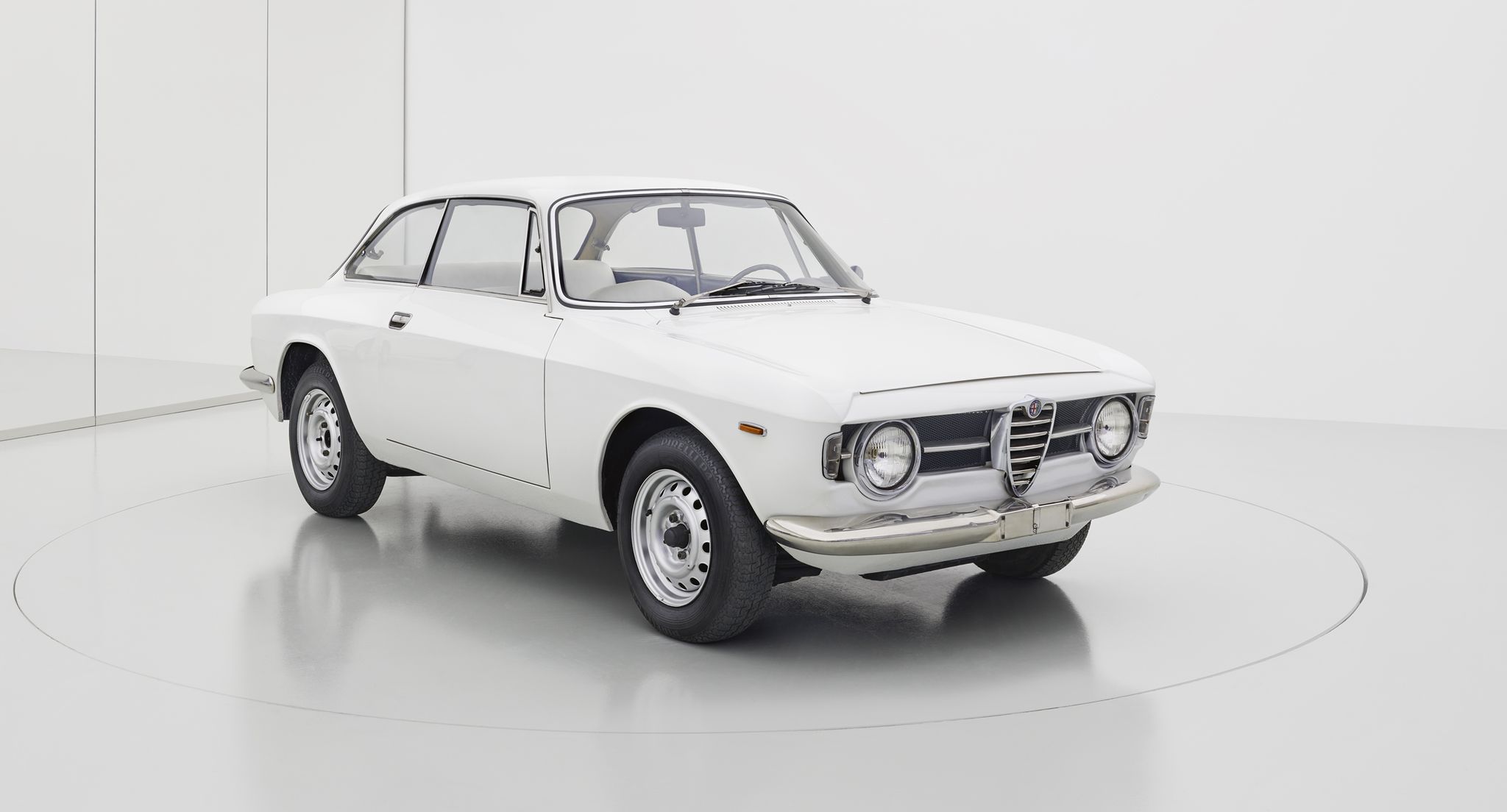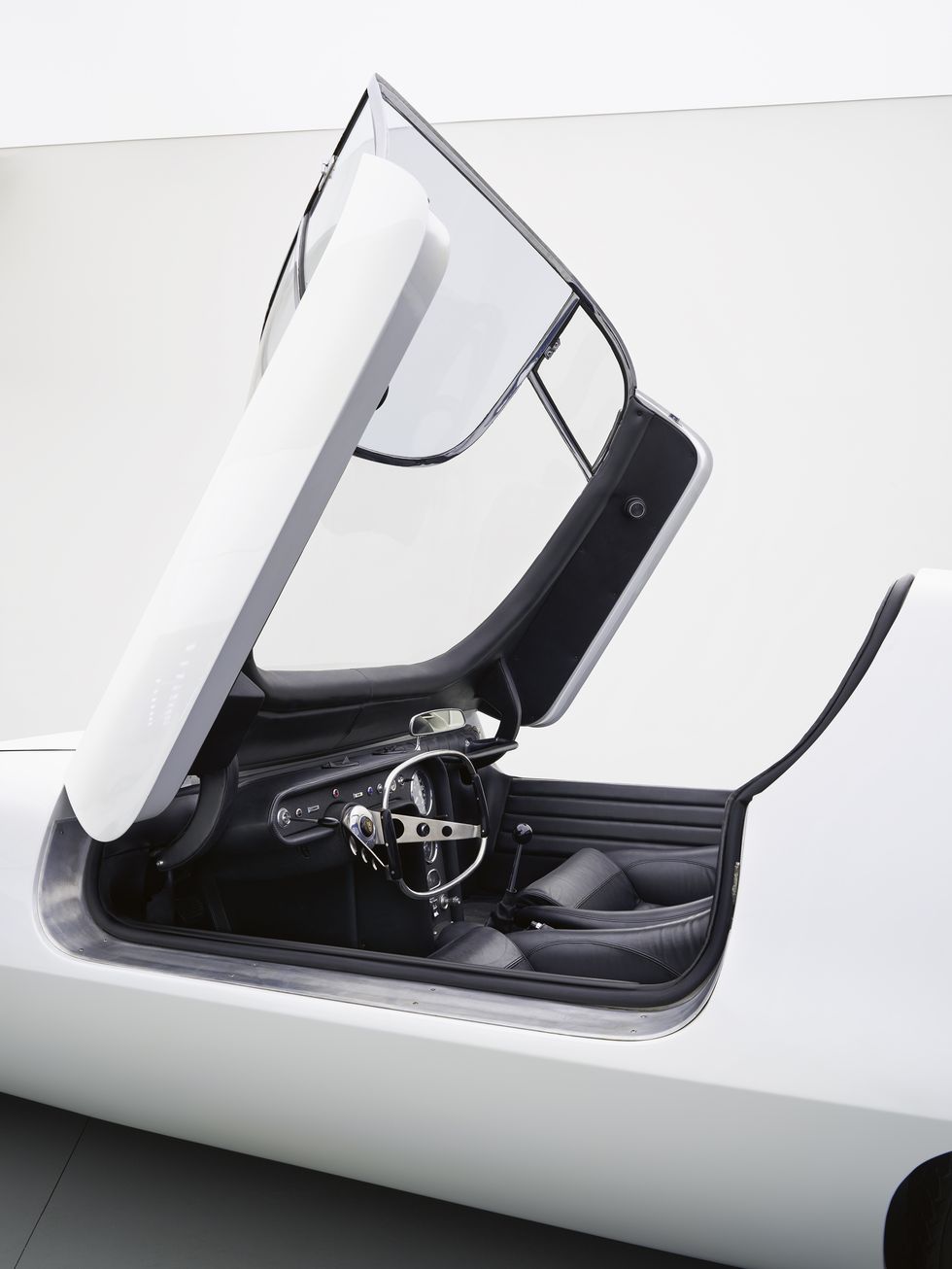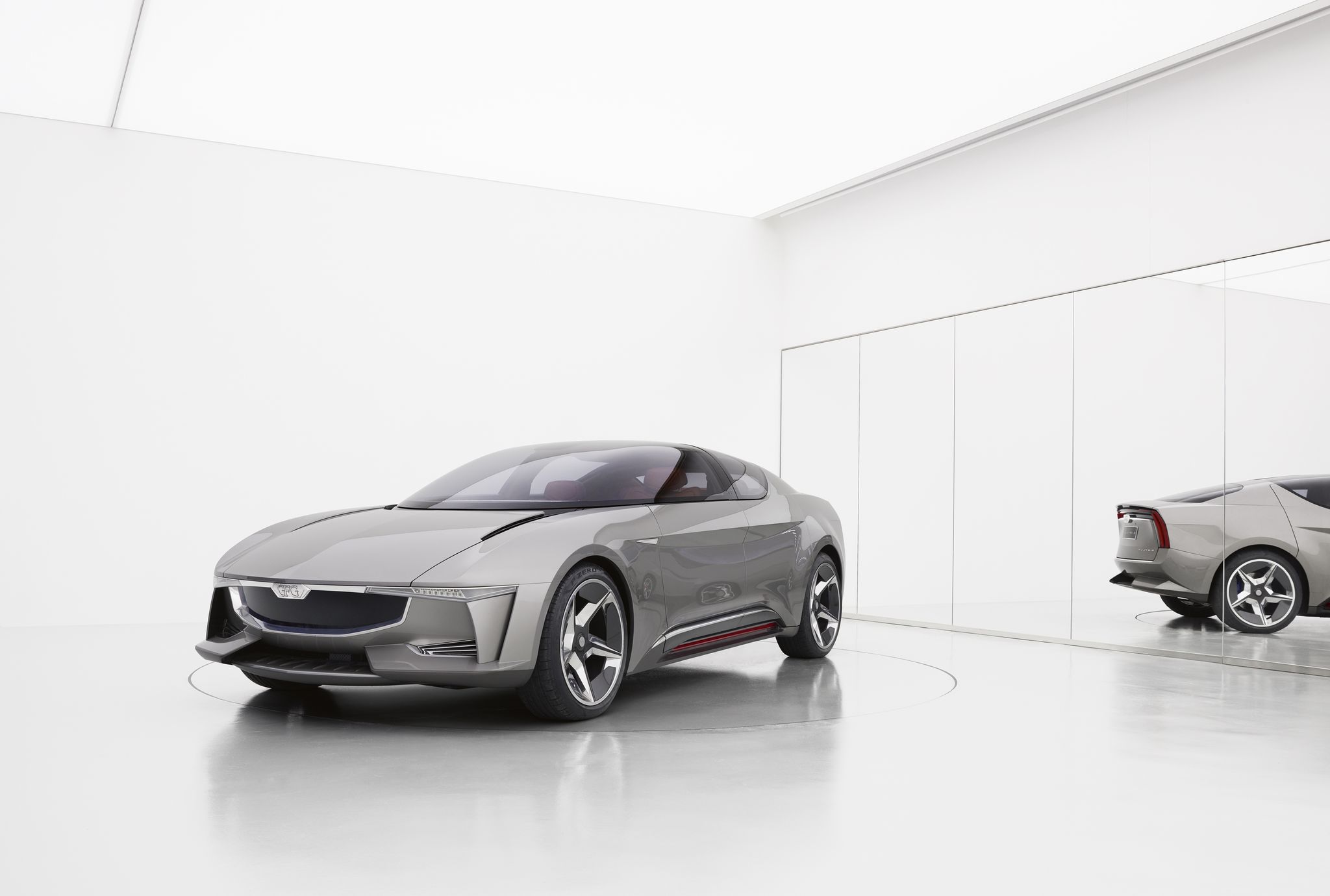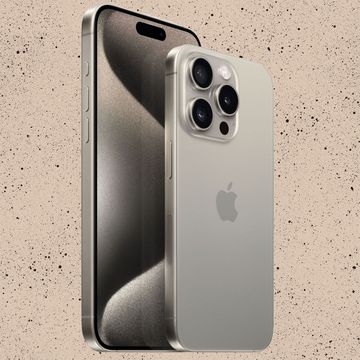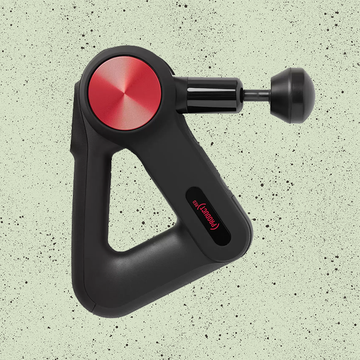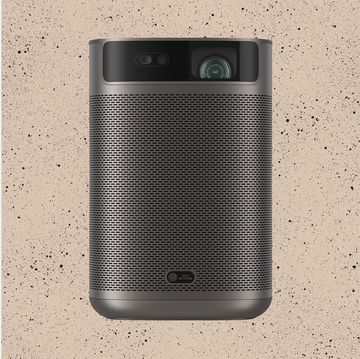One day in the autumn of 1969, a young Italian car designer walked into a meeting with some hostile German engineers at Volkswagen’s headquarters in Wolfsburg, and changed the history of motoring. Volkswagen was in trouble. Its famous Beetle, a 36-year-old phenomenon whose success symbolised not just Volkswagen’s rise, but Germany’s post-WWII reinvention, was losing sales and threatening to take the company down. Working on a successor, CEO Kurt Lotz had sent a team to the Turin Auto Show to choose the six best designs, and invite the designers in for interviews. In fact, four of the six had been by designed by one man, the affable but nervous, somewhat intellectual 31-year-old who now sat before 15 stern German engineers.
The engineers shared the common German opinion that Italians — particularly Italians like this one, who had designed a lot of flashy sports cars — could draw pretty vehicles, but couldn’t be relied on for serious projects. After explaining that Volkswagen’s initial plans for the new car were to be based on the recently released Fiat 128, the engineers told him they’d taken apart a 128 to work out measurements for their model. They were showing him the engine compartment when he interrupted. “Those aren’t the measurements for a Fiat 128.”
Unlike most of his peers, this designer had an obsessive interest in technical detail and an incredible memory. The engineers protested, but he reeled off more figures, and when they were checked, he was correct. They switched to increasingly aggressive technical questions about manufacturing processes, and he answered them all: it was a business meeting version of a spaghetti Western shoot-out. The Italian knew he’d won when one engineer huffily left the room to check some more details with another department.
The young man got the job, and the car he would design was the Volkswagen Golf — a design that meant many of us would now spend our youths driving nippy hatchbacks, while the GTi version would basically reinvent the sports car. One of the best-selling cars in automotive history, with 33m sales under its fan belt, the VW Golf (renamed the Rabbit in the US and Caribe in Mexico) would help the engineers of Wolfsburg to become the biggest carmakers on the planet.
“Yes, quite a success in the end,” says Giorgetto Giugiaro, leaning forward on a deep, traditional white sofa in the offices of his architectural practice in Moncalieri, just south of Turin. The Golf creator is now 80, dressed in impeccable Italian style: well-tailored mid-blue wool suit, pale blue open-neck shirt, tortoiseshell specs and thick, pearl-white hair, combed back.
He is by general consent the world’s greatest living car designer, arguably the greatest to have ever lived: in a 60-year career he has designed 200 models with sales of more than 60m, and in 1999 a panel of respected international journalists and car industry leaders voted him “Car Designer of the Century”. Among his many era-defining cars are the DeLorean (Back to the Future) and Lotus Esprit (The Spy Who Loved Me), as well as mass-market models like the Fiat Panda and a set of concept cars that are still reference points for other designers.
In 2015, when he sold his last shares in his company Italdesign, it seemed he might be bringing an end to an output that in recent years had been solid but hardly spectacular. In fact, there has been a revival both in his work and in interest among fans. His cars pop up in fashionable media (for example, the Maserati Boomerang in Juergen Teller’s Louis Vuitton ads from 2014) as fans pay homage (the week before I visit, a German photographer couple had driven to visit him in their Fiat Panda, revered by some as a masterpiece of utilitarian design, so he could sign it).
It’s almost certainly because radical thinking like Giorgetto Giugiaro’s is back in vogue. The car industry is going through strange times: electric and self-driving vehicles are becoming more important, the billionaire market can sustain small-run, innovative, hyper-luxury models, and some pundits argue millennials are more interested in car clubs and rentals than ownership. Giugiaro, working in a new company, GFG Style, established with his son Fabrizio, has risen to the challenge, reviving the Sixties and Seventies practice of producing mad, exciting, thought-provoking, concept cars for the new, teched-up, eco-friendly era.
Last spring he unveiled the Sibylla, a four-door electric concept car that deliberately recalled his breakthrough design, the 1963 Chevrolet Corvair Testudo. He explains why he thinks electric power and technology, rather than making cars more boring, will reinvent them for the better.
“In the future,” he says, moving forward in his seat and gesticulating in time-honoured Italian style, “I think cars will be shared more. I designed a car for this in 1992 [he did: the Biga concept car]. But you will rent different kinds of car for different occasions. One car for functional things: if you want to go out with your friends you’ll drive a Jaguar or a BMW, or have an SUV to go to the mountains, and perhaps you might have an electric Rolls-Royce to rent for really special occasions. So the style will matter more, not less.”
People in marketing say millennials and Generation Z aren’t as concerned as their parents were with showing off material possessions, but he is sceptical about that. In fact, he’s sceptical about most things people in marketing say, because he thinks men buy cars for psychological reasons marketeers cannot measure.
“Well, yes it is different,” he says. “The younger generation maybe don’t care about appearances quite as much, and they have more kinds of love. In the past, many men had their car as the main love, now they have more interests: they are also fans of an actor or a singer, they have phones and technology. But the car is still something that shows who you are. It is important, because it enables you to move around, and it makes you more free. It’s like fashion: different types of people are attracted by different brands and models, and your car is a status symbol to show who you are, what you think and what you would like to be. Humans don’t change: a man will always want to show himself, he wants to spend his money, and show what he prefers by his choice of car. A car can do that.”
Giugiaro began his career as a 17-year-old junior in Fiat’s Turin design office in 1955. It was a good time and place to be a young car designer: Citroën had that year released the DS, the car that inspired so many design experiments in European cars in the Fifties and Sixties, and Turin, the Italian motor city, was full of manufacturers, parts makers and designers. Even now, as you drive through the city and Moncalieri, it’s striking how often you find yourself passing, say, a huge Fiat plant, and the compounds of legendary companies like Pininfarina or Bertone. Back then, the city lived with the rhythm of car production lines, and new ideas flew back and forth.
“Before those days,” Giugiaro recalls, “the engineers had really done the design, but now industrial was coming in and we’d give engineers ideas for solving problems, so then they could create new products and systems for us to create something with, and so it went on.”
At 21, he was headhunted by legendary designer and car builder Nuccio Bertone to join his coachworks (as a test exercise, Bertone set him the task of drawing a new Alfa Romeo: it was so good, Bertone eventually sold it to Alfa). At Bertone, he began to experiment with different looks for Alfa Romeos, concentrating, like other designers at the time, on the lights (“at the time, the engineers were discovering how to make different shapes of lights, which created new options; if you look, all the changes in design from the Sixties onwards really came from being able to put lights in different places”).
He was given the Testudo project when General Motors commissioned Bertone to produce a more interesting, sporty version of their popular but plain Chevrolet Corvair. What young Giugiaro came up with was certainly interesting: when he took it out for a test drive in the Alps one night in 1962, it prompted calls to the police from villagers who thought it was a UFO.
The Testudo launched the dramatic, low-slung sports car profile of the Sixties. It was very, very low: its headlights were embedded in the bonnet (he thinks the upward tilt of the lights is what prompted the UFO scare) and there were no doors, just a glass half-dome cockpit that hinged up to let you in. In design terms, the really clever thing was that it was still recognisably based on the Corvair. “People have to be excited by something new,” he says. “But they also must be able to see what you are evolving from. If the change is too great and we don’t understand the evolution, that’s when something can look ugly.”
The press who saw the Testudo at the 1963 Geneva Motor Show thought it looked like a masterpiece. In the end, GM did not put it into production, but it had a vast influence, a sort of car version of The Beach Boys’ Smile album. Without it, there may never have been the Lamborghini Miura or Ferrari Daytona — and the Porsche 928 was essentially a late Seventies cover version.
From Bertone, Giugiaro moved to Ghia, another designer and coachbuilder, where he designed, among others, the Ghibli and the De Tomaso Mangusta (David Carradine’s car in Kill Bill: Volume 2, and Kylie Minogue’s in the “Can’t Get You Out of My Head” video). He was married with two kids by this point, and, despite the fantastical look of these cars, he was building a reputation for being extremely diligent, methodical and practical. Car designers tend to make their first drawings of cars that could never actually be built: the wheels will be impossibly large, for example, or the body way too long and low. Engineers then have to do the hard work to turn it into something viable, which is one reason they typically despise designers and stylists. Giugiaro, however, likes to think of himself as an engineer: his first drawings are always within the measurements and proportions of a brief.
“It is unusual,” says his biographer Giuliano Molineri, “to find a designer whose first approach is not beauty but the production solution. This, and the fact he thinks about costs, was his real innovation.” Giugiaro can be faintly withering about what he sees as time-wasting impracticality: “The problem for some designers is they have a problem with reality.” There are basic principals of car design: ratios of height to width and glass to metal, the placement of the cabin in relation to bonnet, wheels and boot, the points where one surface transitions to another, the importance of “character lines” along the side of a car. Many designers like to talk about these, and how they relate to the imagination and emotion, but if you try that with Giugiaro, he often diverts the conversation to engineery-type detail.
When I ask about the sensuous shape of the Mangusta, for instance, he explains how with it he had the idea of fixing glass windows to steel using rubber seals instead of chrome, so chrome became a luxury touch, not a necessity. (Inspired by the subject, he jumps up, takes out his trademark blue Staedtler mechanical pencil, and grabs a piece of paper to sketch the seal for me, which prompts his assistant to suggest using a different sheet because the one he’s drawing on is in fact his original archive sketch for the Mangusta.)
I wonder if Giugiaro really thinks the engineering detail is more important than the overall look, but he says no; he learned at Fiat to be careful with that idea. When the engineers came back from the Paris Motor Show in 1955, one was saying Citroën had to leave space around the doors, about 50mm, which wasn’t good because it meant they couldn’t count on the doors fitting. He went on and on about the 50mm, and eventually one of the other men interrupted him. “He said [Giugiaro imitates a strong, rough, Tuscan accent], ‘You and your 50mm! When you see a beautiful woman, you think about the possibilities! You don’t only look at the asshole!’ It was a good lesson.”
He erupts in laughter at this, as he often does telling earthy stories about the industry; he might read Umberto Eco and say he’d like to have been a fashion designer, but he obviously knows his way round the shop floor and isn’t afraid of getting his hands dirty. He says he gets ideas riding trail bikes in the mountains around Garessio, the alpine village about an hour’s drive from Turin where he was born and raised, and where he and his wife spend most weekends. When he’s there he hangs out with a lot of farmers who, he says, perplex him with their fondness for Audi A4s.
“I say, ‘What has an Audi A4 got to do with your work and lifestyle?’ And they say, ‘Nothing, but if I put on clean clothes and drive an A4 into town, people think I’m a doctor or a lawyer, not a farmer.’ This is men. They always like to change something about themselves. It’s always an illusion, but they always do it.”
Giorgetto Giugiaro’s father, Mario, and his grandfather and great-grandfather were artists. They painted frescoes and decorative paintwork on churches and palaces, and as a little kid in Garessio, Giugiaro hung around with them, watching. What they did was hard: the surfaces were uneven, and often curved, so they had to make allowances for that as they painted Madonnas, heavenly and pastoral scenes. He learned to do freehand portraits from his dad, and his grandfather taught him to paint clean lines on different surfaces. The connection is obvious. For car designers, the manipulation of surfaces and light is paramount: look at any car, and you’ll see surfaces facing upwards reflect light, and those facing down look dark. Lines, curves and flares in panels add touches of light and shade to create shape and drama and instil emotion.
As a boy, Giugiaro wanted to be a painter, and he has painted portraits and landscapes all his life; on his 80th birthday he painted a series of four-metre panoramas used in a cycle of Passion Plays performed publicly in Garessio every four years. His father, however, seeing the obvious talent, warned him off art and sent him to Turin to study rendering, costume design and technical drawing, which would teach him to work in three dimensions — something he felt would be more profitable than two.
It could be tempting to think of Giugiaro’s cars as a kind of art, but he’s not interested in the idea. Art is art and a car “is an engineered product”. He chose the commercial life, after some solid advice from his father, who was suspicious of art for art’s sake, and thought modernist painters just couldn’t draw properly. “A bohemian lifestyle is satisfying when we’re young,” Mario told him when he was a boy. “But it ends up being depressing.”
Giugiaro set up Italdesign with a partner, Aldo Mantovani, in 1968, after leaving Ghia. Italdesign would, claims design writer Tony Lewin, “set the car industry’s design agenda for the next 40 years”. It also allowed Giugiaro to work in other fields and he turned his favoured blue pencil to hundreds of different items from cameras, watches and sewing machines to trains and football stadia. In 1983, he went into pasta, inventing a new shape for Barilla (a large, double-pipe ridged penne with a tube to hold plenty of sauce; apparently no longer available). It made him appreciate the genius of the original pasta designers in the 19th century, and the interest people take in pasta. Everyone asks him about it, so much so, he says, smiling, that, “I sometimes think it may be the pasta I’ll be truly remembered for”.
If there is a single piece of design genius he’s most likely to be remembered for, it’s a steel rather than dough-based one. In 1972, his concept car for Maserati, the Boomerang, launched a whole new look for cars based on wedges and sharp, straight lines inspired by Japanese origami. The most famous commercial application of this “folded paper” style would be the Volkswagen Golf Mk1, but the effect is visible in all the angular car designs that followed.
He says he had to invent it partly because “after leaving Bertone and Ghia, I needed a distinctive style of my own, so people didn’t think I was using my employers’,” but it became popular throughout the entire industry because it was so efficient. In manufacturing terms, as he knew, it’s easier and cheaper to join two straight edged components than two curves, so straight edges save time and money.
You can see the origami look in a convoy of key-droppingly handsome motors conceived on Italdesign desks in the Seventies and Eighties, including the Esprit, BMW’s autobahn-eating M1 in 1978 (“really an evolution from the Mangusta”), the stainless steel (“it was really just to save money on the paint”) DeLorean in 1981, and the third-generation Audi 80 in 1978. Its efficiency enabled Giugiaro to lead a shift in thinking about the discipline of automotive design.
Body design had become important to cars almost as soon as they went mass-market in the Twenties and Thirties, as manufacturers realised they could create a fashion cycle of near-constant updates without re-engineering the whole car. That principle was applied more and more until the Seventies when the Middle East oil crisis tanked the West’s economies. In response, Giugiaro looked back to the old mobility-for-the-masses ideal that inspired cars like the Ford Model T, VW’s Beetle, the Fiat 500 and Citroën 2CV. In the future he saw, car styling would be not just about the look but about good design at low cost, which meant rethinking what cars were for. That would mean different kinds of cars, not just saloons, estate cars and two-seater sportsters.
Italdesign would also produce radical concepts for reinventions of New York taxis, double-decker cars and the boxy Lancia Megagamma of 1978, which pioneered the idea of the people carrier years before Renault popularised it with its Espace. There would be a succession of affordable but well-designed models, like the Fiat Panda (conceived as the car “equivalent of a pair of jeans”), Fiat Punto (1993), Seat Ibiza (1984) and Alfa Romeo’s earlier influential AlfaSud (1971). He’s less sure about the idea of democratised design these days, though; he learned that the hard way in real life, rather than the good, cheap design of a Panda: “many people would rather spend money on a third-hand BMW”.
Through the Eighties, Nineties and Noughties, Italdesign retained close relationships with Volkswagen, Fiat and Far East manufacturers. It developed into a sleek international behemoth — “the greatest design house ever” according to at least one motoring magazine. There were fewer radical innovations but it was still capable of designs (the 1998 Maserati 3200GT; the 2003 Lamborghini Gallardo) that could make a brand look interesting again. Italdesign had achieved serious scale: in the Noughties it created Juventus’ new Turin stadium, and the furnishings for the International Space Station. In 2010, Volkswagen took a big stake: by 2015, rumoured to be somewhat at odds with German management, Giugiaro walked — or presumably, drove — away.
We drive away from the HQ, through wooded hills to the GFG Style offices, where a collection of his cars sit glistening in a showroom. At the centre is the Sibylla, the four-door electric saloon car developed with Envision, a Chinese energy company. It’s big — 5m long — and, like the Testudo, has a glass dome roof that slides forward to let you in: Giugiaro once said of his concept designs that “dream cars are the best”, and the Sibylla is proof. It’s almost certainly too expensive to produce as a mass-market car, though it hasn’t yet been ruled out by Envision, and it can certainly be driven: there are two prototypes, Giugiaro currently uses one of them.
He walks me around it, and the enthusiasm and the hands move into top gear. “See the brake lights at the front? It means pedestrians know when you’re slowing down at crossings! Look, with the glass dome you have perfect visibility, because there are no pillars! Watch how we get in! Look at the rear seats, like two extra passenger seats, because with an electric car the floor is flat, so you can give more room! Have you seen this dashboard? Look, it’s all one single visual display unit that goes right across!”
In the two front seats, we look out at the white wall in front of us as if he might just start up the car and drive through it. He talks about more possibilities: new plastics that allow so many shapes for the nose of the car, LED lights that will display different colours, patterns and images inside and out. “Lights is a kind of identification for the car, and LED is a revolution in lights, so... the front part of the car is changing completely.”
I wonder, given that he’s already achieved a fair bit, if he doesn’t feel like he’s done enough and could just relax? Or swan in, chuck some ideas about and let other people do the work?
“No,” he says, taking his hands from the spaceship-like steering wheel and slapping his thighs. “Because I was always into the constructibility of the product. Anyone can draw a car. But that’s it, it’s just a drawing unless you think about what the engineers have to do to make it real. That’s the excitement, in designing something that can be made. I was never interested in just drawing something cool.”
Like this article? Sign up to our newsletter to get more articles like this delivered straight to your inbox
